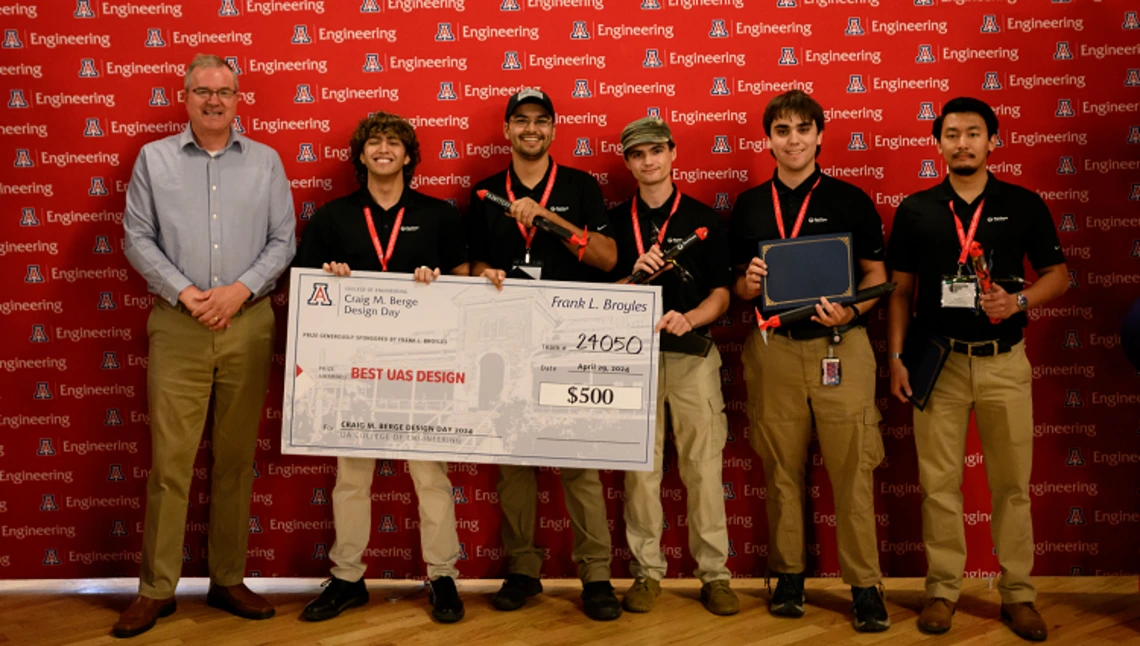Students present award-winning drone to government agency consortium

Craig M. Berge Dean David W. Hahn presents the Frank L. Broyles Award for Best UAS Design to 24050 team members (from left) Maximo X. Ybarra, Chuy Talavera, Nathan Randall Julicher, Thomas Schwab and Jason Li.
Interdisciplinary Capstone Team 24050 won the Frank L. Broyles Award for Best UAS Design at this year’s Craig M. Berge Design Day. The team of undergraduate engineers worked with sponsor Raytheon Technologies to create a drone that was economical, reliable, deploys to its working altitude quickly and quietly, and that could be made with readily available components.
The drone is designed for use by first responders, search and rescue, or law enforcement workers. Under certain circumstances it may not be retrievable, so the design had to be low-cost.
The team’s drone looks more like a model rocket than a typical quad copter, and that’s because it is launched from a pneumatic tube. Once it reaches the desired altitude – up to around 300 feet – the drone pilot remotely jettisons the rear assembly on the craft to deploy four propellers on forearms, which snap out of the fuselage of the drone by means of an elastic shock cord. The pneumatic launcher gets the drone aloft in a hurry and also saves precious battery power.
“It was a hands-down win,” said award sponsor Frank Broyles. “Their project is just truly an outstanding, well-thought-out, practical application.”
Broyles, who graduated with a mining engineering BS in 1968, became an attorney and practices in the Dallas area. But he’s never left engineering behind, and he has been judging University of Arizona capstone projects for years.
Given the potential first responder applications of Team 24050’s drone, Broyles asked team lead Nathan Randall Julicher to give a presentation to the North Central Texas Council of Governments, a consortium of Texas counties.
“I became pretty fascinated with what was going on legally in the drone world," Broyles said. "The counties want to make sure that a drone could fly from one county into another without having to encounter changes in local drone regulations."
Broyles, who has been working with the NCTCOG for more than five years, explained that the group also wanted to learn more about how drones operate for economic reasons.
"They consider drones and drone enterprises a potential major economic driver, so I recommended that they hear from Nathan."
The two-hour session took place in early May. In addition to Julicher, representatives from several drone companies – some international – presented on their products via Zoom. Broyles reported: "I thought Nathan's was by far the best of the group.”
